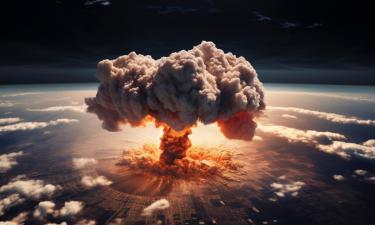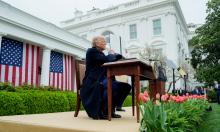Discovery is back!
With the second return-to-flight mission over and all its goals completed, a jubilant feeling spread throughout the sprawling work force of NASA and its contractors after the shuttle landed at Kennedy Space Center. It has been a rare feeling since the Columbia disaster in 2003 that killed seven astronauts.

The biggest achievement of the mission was to show that a space shuttle could launch without dangerous foam shedding from its external tank during launch and striking the vehicle - what doomed Columbia. NASA redesigned the external tank after Columbia, and again last year after a piece of foam came off during the first return-to-flight mission and caused the shuttle fleet to be grounded for almost a year.
Almost as important, two Discovery spacewalking astronauts repaired a rail car that is vital for the continued construction of the international space station, and the crew tested inspection and repair techniques on the space shuttle.
The shuttle carried up seven astronauts, but departed the space station on Saturday with six - Lindsey, co-pilot Mark Kelly, Michael Fossum,Piers Sellers, Lisa Nowak and Stephanie Wilson. German astronaut Thomas Reiter of the European Space Agency was left behind for a half-year stay, boosting the station's crew size to three.
Despite the successes, Lindsey said the lessons of Columbia should never be forgotten. NASA was criticized for squelching concerns about foam problems with Columbia. Before Discovery's launch, dissent was aired openly with the space agency's top safety officer and chief engineer opposing a launch until further changes were made to the external tank. Griffin overruled them.
During descent, Discovery's astronauts and flight controllers kept close watch on a slightly leaking power unit, and a last-minute buildup of clouds caused Lindsey to change the direction of the landing.
The crew had worked almost nonstop during the mission, and admitted they were tired, but they adjusted to gravity without any problem and appeared healthy at a news conference. All six astronauts walked around and examined the parked shuttle after landing, along with Griffin and top NASA administrators.
Griffin noted that NASA faces 16 more shuttle flights to complete the space station and, hopefully, repair the popular Hubble Space Telescope before the shuttle fleet is grounded in 2010. A decision is expected later this year on whether to send a shuttle to Hubble one final time to extend the observatory's life.
NASA barely has time to bask in its success since another shuttle launch is scheduled in six weeks. Atlantis' upcoming mission will deliver and install a massive beam and set of solar wings to the international space station. The space agency is aiming for a liftoff as early as Aug. 27.
Subscribe to Pravda.Ru Telegram channel, Facebook, RSS!




